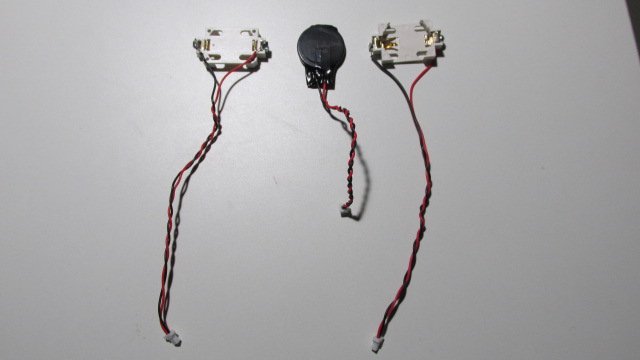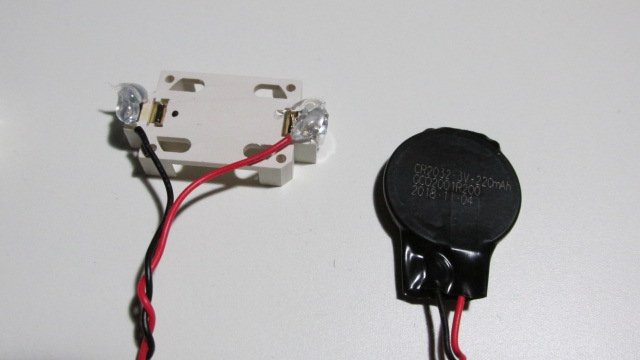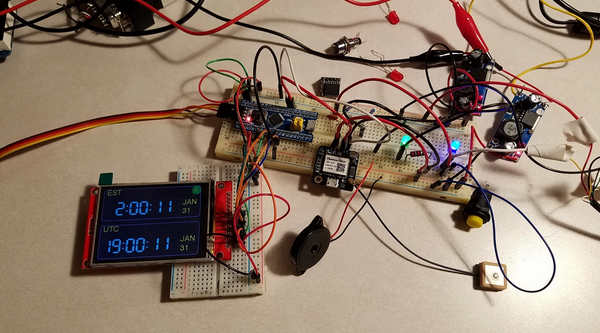You are using an out of date browser. It may not display this or other websites correctly.
You should upgrade or use an alternative browser.
You should upgrade or use an alternative browser.
Any Electronics Enthusiasts?
- Thread starter Vincenzo Corleone
- Start date
Qs Laptop
Thinks s/he gets paid by the post
- Joined
- Mar 11, 2018
- Messages
- 3,554
^^^^^^
All of the squares have resistors... That one is nuts...
To lazy to try to find the 220's.

I looked it over pretty well when I first saw it and I didn't see any 220 ohm resistors.
Ian S
Thinks s/he gets paid by the post
I did exactly that to fix a digital oven display in our old home. It felt so satisfying to repair a $1000 wall oven with less than a dollars worth of caps!Bad capacitors are notorious on appliances (e.g. oven, range, microwave) displays.
Replace just those and you can usually read your display again!
My second job out of engineering school was at HP in Spokane, where they, for a time, built the 8640B signal generator. I'm still with (the real HP) Keysight nearly 26 years later. Great company to work for and yes, the engineers are still wizards. The gear they design and manufacture is still tops in the industry.
I used to repair some of my own stereo gear when I was big into the hobby. But the stuff I still have on hand has been very reliable. The enthusiast-level stuff was designed and built pretty well. Haven't needed to pull out the soldering iron to do a repair for quite some time.
I used to repair some of my own stereo gear when I was big into the hobby. But the stuff I still have on hand has been very reliable. The enthusiast-level stuff was designed and built pretty well. Haven't needed to pull out the soldering iron to do a repair for quite some time.
NW-Bound
Give me a museum and I'll fill it. (Picasso) Give me a forum ...
- Joined
- Jul 3, 2008
- Messages
- 35,712
Heck, I started to play with this stuff since 12.
A few years later, was already able to read resistor codes at a glance, as there are only 12 combinations of the first 2 bands for the standard 10% values, plus another 12 for the standard 5% values. The 3rd band for the decade is similarly easy to tell at a glance.
I have to admit that I did not encounter 2% resistors with 4 color bands that often, and would have to slow down to think when I encountered them.
About the Captcha, heck, the colors in the photo are so bad, how can I tell their values?
And talk about bad colors, I have often been thrown off by a decade band that has an off color. I would confuse red for orange or vice versa, or orange and brown, then pulled my hair out when the circuit did not work. Only when I started to probe around measuring voltages was I able to find the problem and curse profusely.
PS. No, I am not color blind.
Last edited:
NW-Bound
Give me a museum and I'll fill it. (Picasso) Give me a forum ...
- Joined
- Jul 3, 2008
- Messages
- 35,712
Speaking about the venerable HP-8640B, mine is actually the military version called the AN/USM-323.
It is mostly like the civilian version, except that the military version can run on 400 Hz AC. Actually, the range of the AC frequency is 48-440Hz.
A ramification of the wide range of AC power frequency is that they could not use a regular fan. There's a whole extra board of electronics to run the brushless fan motor! Back then, there was no brushless fan with the miniaturized electronics built into the fan.
It is mostly like the civilian version, except that the military version can run on 400 Hz AC. Actually, the range of the AC frequency is 48-440Hz.
A ramification of the wide range of AC power frequency is that they could not use a regular fan. There's a whole extra board of electronics to run the brushless fan motor! Back then, there was no brushless fan with the miniaturized electronics built into the fan.
Speaking about the venerable HP-8640B, mine is actually the military version called the AN/USM-323.
It is mostly like the civilian version, except that the military version can run on 400 Hz AC. Actually, the range of the AC frequency is 48-440Hz.
A ramification of the wide range of AC power frequency is that they could not use a regular fan. There's a whole extra board of electronics to run the brushless fan motor! Back then, there was no brushless fan with the miniaturized electronics built into the fan.
Let's keep our fingers crossed that the nylon gears in our 8640s stay in good shape!
ERD50
Give me a museum and I'll fill it. (Picasso) Give me a forum ...
If you are not already familiar, I think you'll like this guy's videos:
-ERD50
-ERD50
easysurfer
Give me a museum and I'll fill it. (Picasso) Give me a forum ...
- Joined
- Jun 11, 2008
- Messages
- 13,155
I'm working on fixing up a couple of laptops and got sick of getting price gouged for CMOS batteries because the laptops don't have a CMOS battery holder like on desktops.
So, I decided to build my own. Pictures show a comparison between the wrapped, price gouged cmos battery vs the built holders. I added some glue to cover my soldering just in case, to not get some kind of short.
So, I decided to build my own. Pictures show a comparison between the wrapped, price gouged cmos battery vs the built holders. I added some glue to cover my soldering just in case, to not get some kind of short.
Attachments
My dad was in the Navy in WW2 and was a radioman. He used to fixed the other shipmates radios, tube radios. He got his EE and worked for NASA and another 3 letter agency. He used to fix friends and family VCRs and TVs but in the 90s it got harder to get parts.
He got his EE and worked for NASA and another 3 letter agency. He used to fix friends and family VCRs and TVs but in the 90s it got harder to get parts.
I tinker some. I recently built a GPS clock, shows both local and UTC within 40 ns, Keeps good time.
I tinker some. I recently built a GPS clock, shows both local and UTC within 40 ns, Keeps good time.
Attachments
NW-Bound
Give me a museum and I'll fill it. (Picasso) Give me a forum ...
- Joined
- Jul 3, 2008
- Messages
- 35,712
I tinker some. I recently built a GPS clock, shows both local and UTC within 40 ns, Keeps good time.
It surely does. Now, it needs to be put in an attractive enclosure.
It surely does. Now, it needs to be put in an attractive enclosure.
I know, I bought a small metal project case and mounted the PCB etc, but I don't have the tools to cut out a square hole in the front for the display. I called around to see if someone had a laser cutter and they wanted $200 to cut it. If I do it by hand it will look horrible. I may try to make a wood case since I have woodworking tools.
NW-Bound
Give me a museum and I'll fill it. (Picasso) Give me a forum ...
- Joined
- Jul 3, 2008
- Messages
- 35,712
^^^ Maybe an acrylic case to show the innards. But then, the wiring has to be pretty. 
Just to give you a hard time, but my projects are always like that.
I don't have the patience nor the skills of MajorTom to make my stuff pretty.
Just to give you a hard time, but my projects are always like that.
I don't have the patience nor the skills of MajorTom to make my stuff pretty.
Similar threads
- Replies
- 0
- Views
- 218
- Replies
- 6
- Views
- 811



